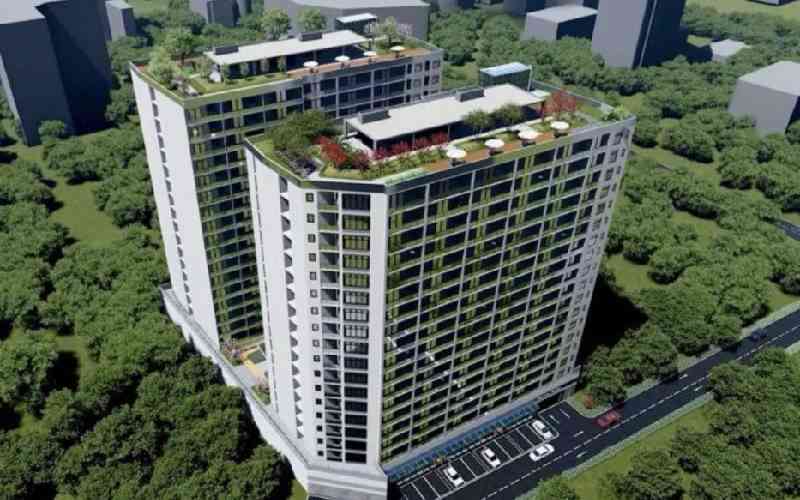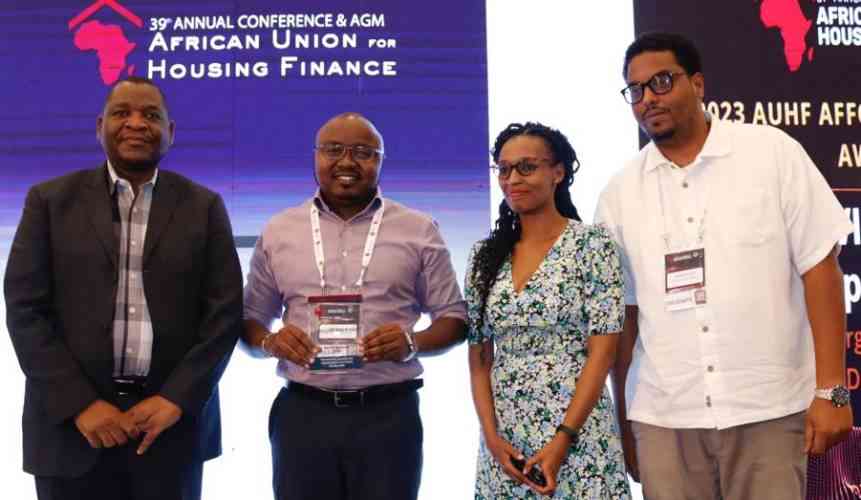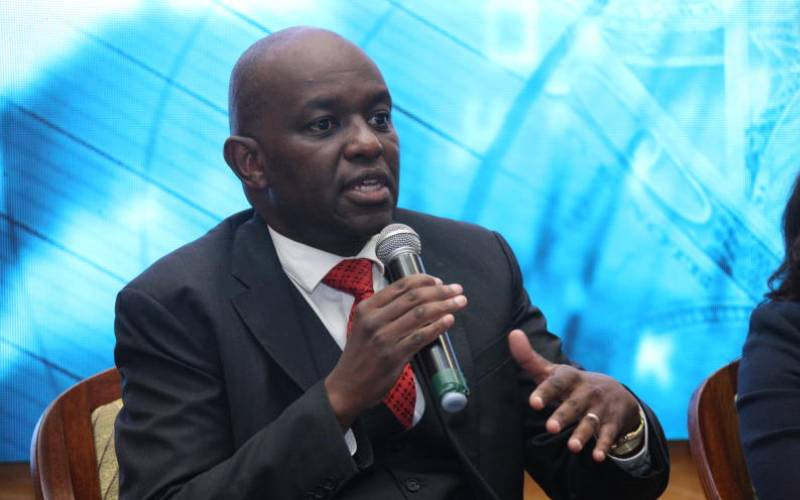By Ferdinand Mwongela
As Kenyans scrimp and save to own a home, for the lower income class this dream is largely a fantasy.
Most have resigned to living in shacks under squalid conditions and it is not their fault. Developers in the booming real estate sector have expressed no interest in developing cheap homes for the poor. Instead, their focus has been the extremely lucrative business of building homes for the middle and high income groups.
 |
One of the beneficiaries of the habitat for humanity kenya housing initiative. One is still under construction. |
The basic urban house consists of a sitting room, a bedroom and a toilet. However, the design allows for future addition of more bedrooms.
Habitat for Humanity Kenya has projects in Bomet, Kisii and Naivasha. In Mai Mahiu, the organisation is building 116 houses for the internally displaced as part of their corporate social responsibility since, as Nyabwengi points out, they do not expect them to pay back.
Choronok group
Housing for Humanity Kenya is affiliated with Housing for Humanity International which, Nyabwengi says, brings together affiliate organisations from different counties who, however, operate semi-autonomously with the requirement that they keep to the mandate of the international organisation and maintain the brand name. The regional office in Pretoria south Africa ensures affiliate organisations do not veer off course and continue to provide housing to low-income earners.
Habitat for Humanity depends on fundraising and corporate sponsors to achieve this noble goal. According to Nyabwengi, venturing into other aspects of real estate development like high-rise flats would be contrary to the organisation’s principles and would result in dismissal.
"We intend to put up about 1,500 units every year," says Nyabwengi.
Habitat for Humanity Bomet Field Officer, Nancy Mateu, says communities have responded well to the organisation’s initiative. "There is no limit to the number of groups as long as they have been registered with the Social Services office," she says.
Currently, there are about 500 houses under construction for 25 groups in Bomet, Sotik and Bureti areas.
The Choronok group in Bomet is one of the growing list of beneficiaries. The chairman of the group, Joseph Mwei, bubbles with positive attitude towards life now that he is a proud homeowner. Since teaming up with Habitat for Humanity Kenya in 2004, Mwei says his group members have taken loans to build houses.
"Twenty group members already live in their own houses," he enthuses in Swahili. Additionally, more are under construction. Another group close to the Choronok group has already constructed and completed three houses.
Stay informed. Subscribe to our newsletter
Nairobi a hard nut to crack
Mwei was the fourth member in his group to complete his house, which he did in 2007. "Tumefaidika sana na hii Habitat for Humanity," he says. "Tunaishi kwa nyumba nzuri (we have benefited a lot from Habitat for Humanity. We now live in good houses)."
In the beginning, many people were sceptical and suspicious of the organisation’s motives when they promised cheap houses. Now those doubting Thomases have joined groups and applied for loans.
In Naivasha, an urban pilot project has seen several beneficiaries acquire low-cost incremental houses.
Nairobi, though, has proved a hard nut to crack. Nyabwengi cites lack of land as one of the major inhibitors since one of the organisation’s requirements is that a prospective beneficiary must own his or her land. This, perhaps, would explain why, despite being in the industry for so long, the organisation’s impact is yet to be felt on a large scale countrywide.
 The Standard Group Plc is a
multi-media organization with investments in media platforms spanning newspaper
print operations, television, radio broadcasting, digital and online services. The
Standard Group is recognized as a leading multi-media house in Kenya with a key
influence in matters of national and international interest.
The Standard Group Plc is a
multi-media organization with investments in media platforms spanning newspaper
print operations, television, radio broadcasting, digital and online services. The
Standard Group is recognized as a leading multi-media house in Kenya with a key
influence in matters of national and international interest.
 The Standard Group Plc is a
multi-media organization with investments in media platforms spanning newspaper
print operations, television, radio broadcasting, digital and online services. The
Standard Group is recognized as a leading multi-media house in Kenya with a key
influence in matters of national and international interest.
The Standard Group Plc is a
multi-media organization with investments in media platforms spanning newspaper
print operations, television, radio broadcasting, digital and online services. The
Standard Group is recognized as a leading multi-media house in Kenya with a key
influence in matters of national and international interest.









